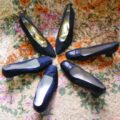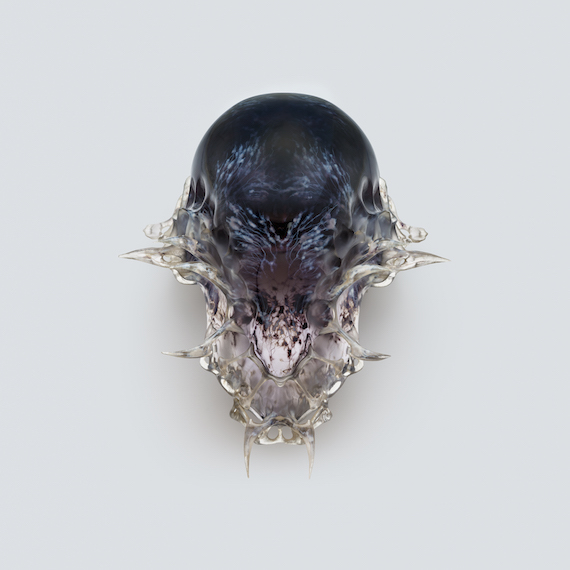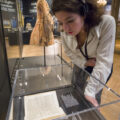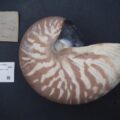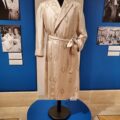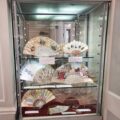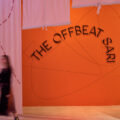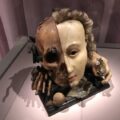Fashion Exhibition Buckingham Palace – Review – Style & Society: Dressing the Georgians
August 30, 2023The fashion exhibition at Buckingham Palace. Style & Society – Dressing the Georgians at The Queen’s Gallery is a gorgeous, informative exhibition filled with glittering gowns and heroic uniforms, both real and in paint… but also King George’s underwear and portraits of washerwomen.
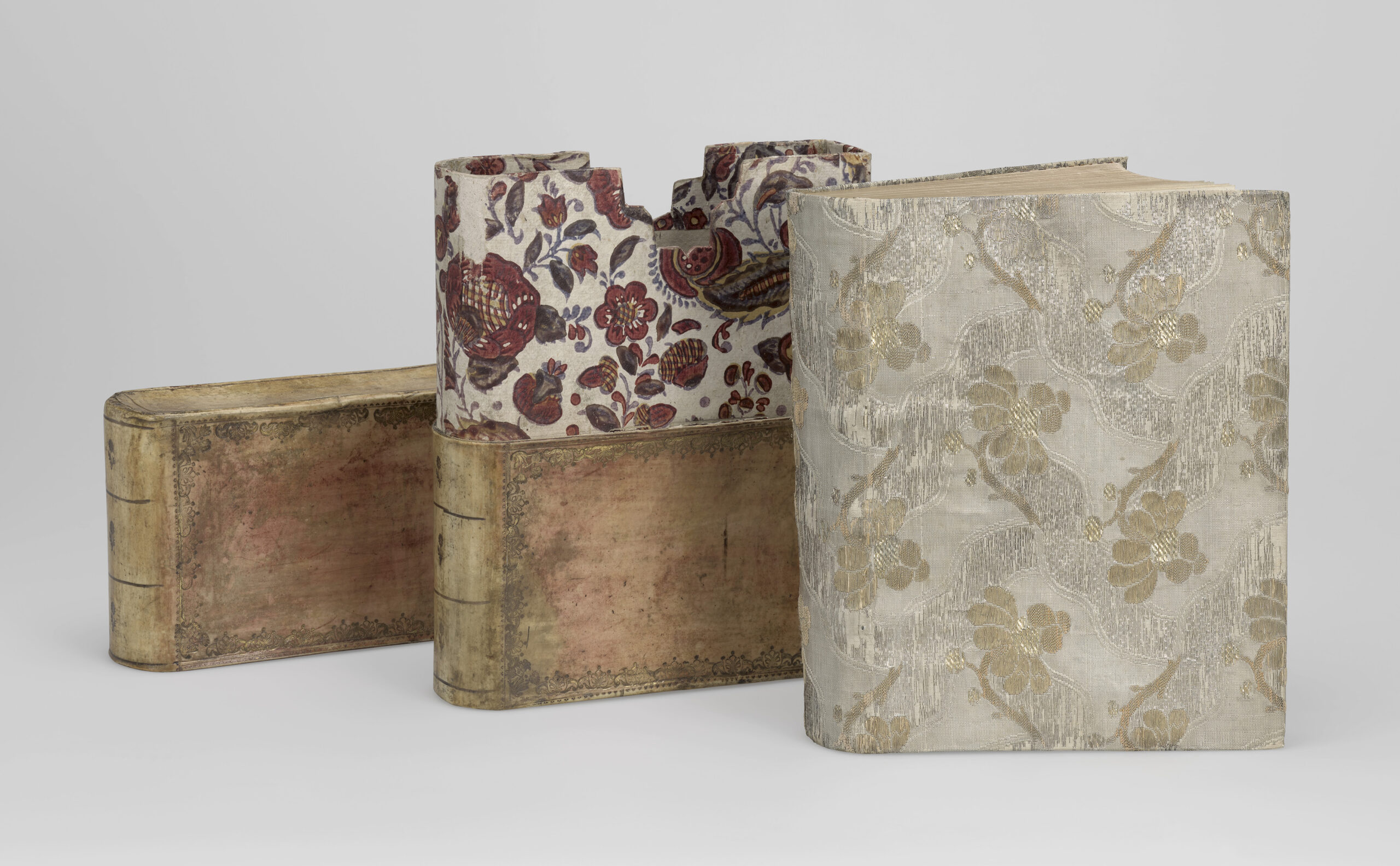
Gottlieb Christian Doelitzscher (ed.),
Die Psalmen Davids, manuscript, 1769.
This book of psalms, owned by
Queen Charlotte, is covered in a rich silk
thought to have been taken from one of
the Queen’s dresses. Used with permission. Royal Collection Trust / © His Majesty King Charles III 2023.
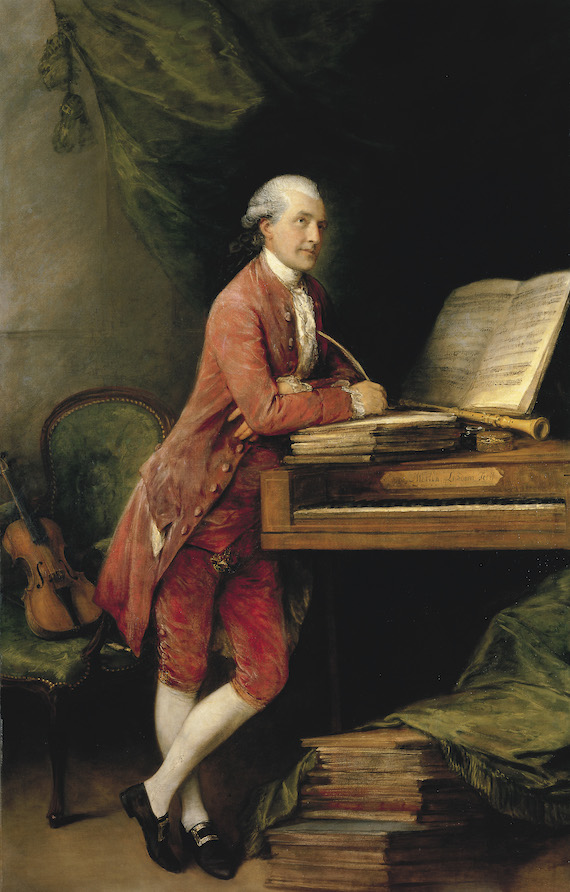
Thomas Gainsborough, Johann Christian Fischer, 1774–80. Used with permission. Royal Collection Trust / © His Majesty King Charles III 2023.
Fashion Exhibition Buckingham Palace – beautiful curation
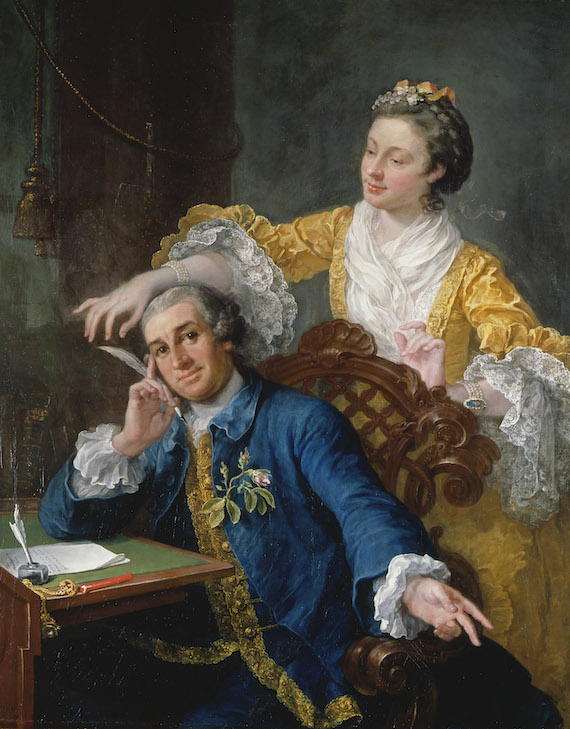
William Hogarth, David Garrick with his wife Eva-Maria Veigel, c.1757–64. Used with permission. Royal Collection Trust / © His Majesty King Charles III 2023.
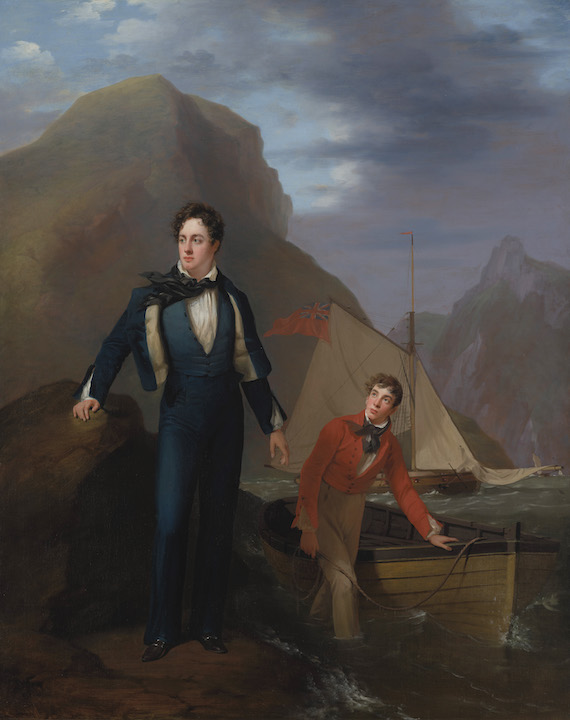
George Sanders, George Gordon, 6th Lord Byron, c.1807–8. Used with permission. Royal Collection Trust / © His Majesty King Charles III 2023.
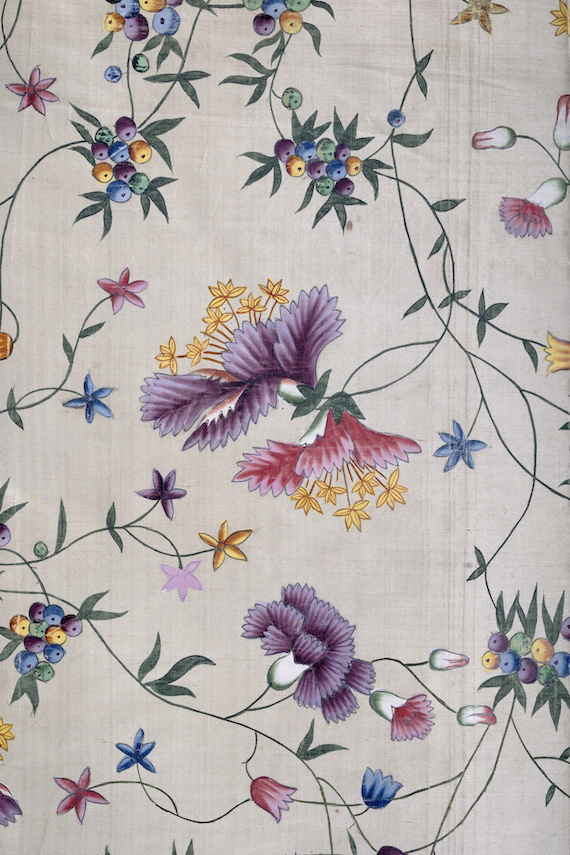
Chinese, Roll of hand-painted silk, c.1760s (detail).
© The Bowes Museum, Barnard Castle. Used with permission.
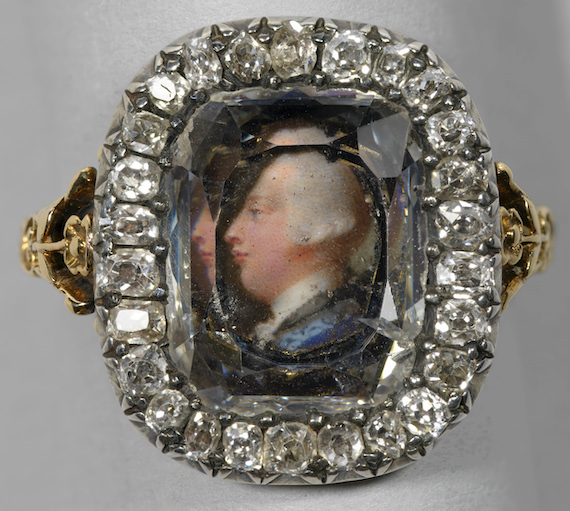
Jeremiah Meyer, Ring with a miniature of George III, 1761. Used with permission. Royal Collection Trust / © His Majesty King Charles III 2023.
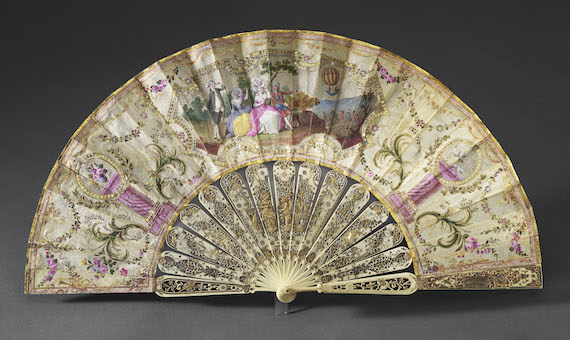
French, Fan depicting ‘The Ascent of M. Charles’s and M. Robert’s Balloon, 1783’, 1783. Used with permission. Royal Collection Trust / © His Majesty King Charles III 2023.
The Queen’s Gallery at Buckingham Palace is a lovely exhibition space. The rooms are vaulted, with beautiful parquet flooring and ceiling mouldings. As you would expect, it is immaculately painted and presented. Yet it is not large, overbearing or intimidating, and the staff were very friendly.
It’s probably a good thing that the space isn’t especially large, as this exhibition is very dense with information. There are over 200 pieces on display, most from the Royal Collection. The articles that are not have been borrowed from other places to complete the story, a decision which I think shows a really great lack of hubris on the part of the Queen’s Gallery, prioritising the story, not the Collection itself. It’s very well curated, with just enough pieces to make each point, and hung so that everything is easily visible.
Unusual Opportunity
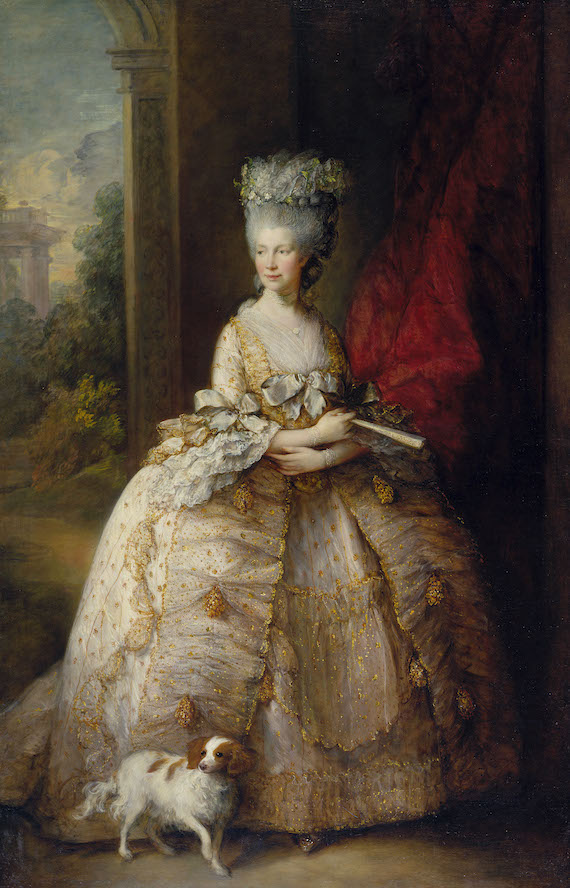
Thomas Gainsborough, Queen Charlotte, c.1781. Used with permission. Royal Collection Trust / © His Majesty King Charles III 2023.
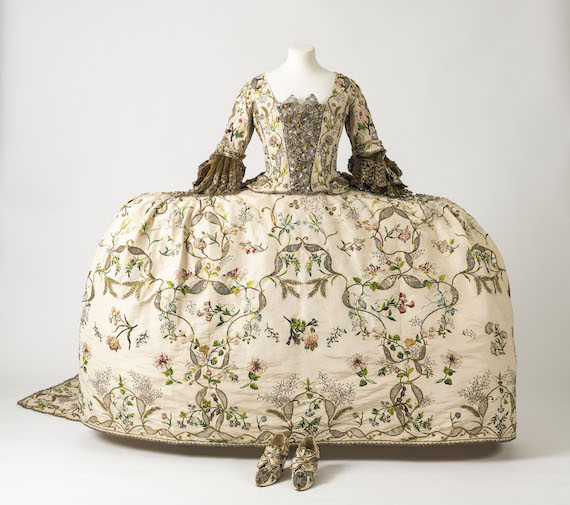
British, Court dress (gown, petticoat, stomacher and shoes), c.1740–60. © Fashion Museum Bath. Used with permission.
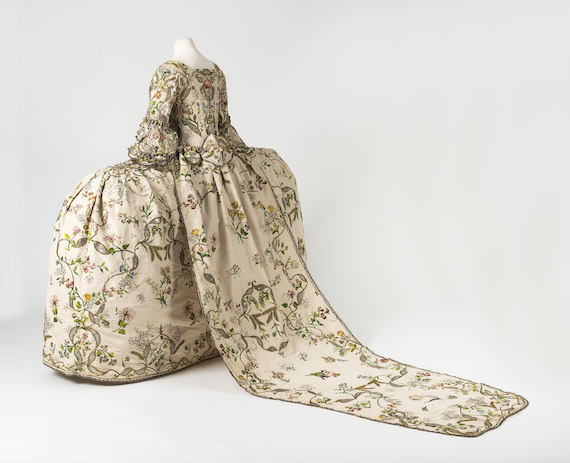
British, Court dress (gown, petticoat, stomacher and shoes), c.1740–60. © Fashion Museum Bath. Used with permission.
Garments, are, of course, especially vulnerable to light and handling, and so some can rarely be displayed. This may be a once-in-a-lifetime opportunity to see some of them. It is worth seeing Princess Charlotte’s wedding dress, dating from 1816. The beautiful dress is of white silk, hand embroidered with silver thread. It was the convention at the time for royal brides to wear silver.
Other garment highlights include her tiny baby shoes, and King George IV’s childhood stays, as well as his chemise as an adult. There is also a dress uniform jacket and hat from the Welsh Guards and a full silk embroidered court dress ensemble, complete with elegant embroidered shoes. As well as that there are examples of fine handmade lace lappets and collars. The work in these is exquisite, and when you realise that it would have taken one skilled craftsperson, working fifteen hours a day, a year to make each and people preferred that the same person make each half of a pair, you realise that a) these were phenomenally expensive and b) fashions in lappets did not move very fast.
Fashion Exhibition Buckingham Palace – Washerwomen and Teeth
Although a show like this could have been full of pomp and glamour (and I wouldn’t have objected!) quite strenuous attempts have been made to show not only the rich, but also their servants, slaves, and the working classes who are involved in making these garments, accessories and even teeth.
Wait a minute, are teeth part of fashion and dress? Well, OK. If wigs can be, then teeth can be. There is a satirical etching by Thomas Rowlandson which shows a rich lady, clutching smelling salts, in a chair alongside a writhing young chimney sweep in a matching chair. Two poor children leave the room clutching money in one hand and their faces with the other. It illustrates the concept of tooth implants, which was popular at the time. The teeth were tied to neighbouring teeth using seaweed or silk, although it rarely worked.
The curator, Anna Reynolds, also pointed out the portrait of George Washington on a nearby wall. His mouth is in a grim straight line. This is, she suggests, because at the time he only had one tooth – he was trying out a set of new ones in seahorse ivory and they were not, as his expression hints, too comfortable. Still, these advance in dentistry may have been why there are more portraits of that time showing people smiling – they were not so careful to hide their terrible gnashers. And indeed, here is a charming portrait of Louis XVI, with a most cheerful look on his face.
Marie Antoinette and the Flea
There is also portrait of his wife, Queen Marie Antoinette. She was, most definitely, keen on fashion, but, the exhibition notes, didn’t spend particularly more than any other rich woman of the time. Reynolds points out that her dress in the painting is a shade which Louis named “Puce” – not the reddish shade know, but a fawn colour. “Puce” means “flea” in French, and the name we know comes from the colour of its droppings. Lovely. Louis’ naming was hardly more charming, referring to colour of the creature itself, yet it was a great hit. Fabric merchants started selling silk in shades known as “Flea head”, “Flea back”, and “Flea belly” – all different.
There is a lot of information like this, all interesting. Luckily you can convert your ticket into a one-year pass, allowing you to visit as often as you like, a strategy which I very much recommend!
Style & Society – Dressing the Georgians at The Queen’s Gallery is now open, and on until 8 Oct 2023.



